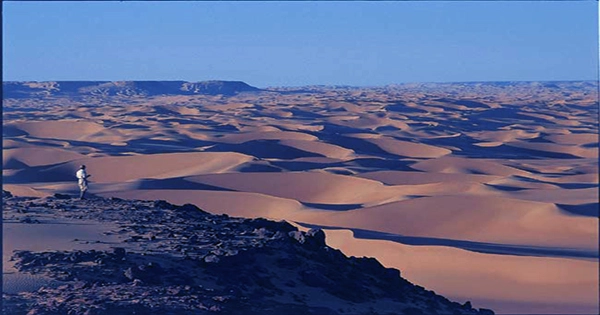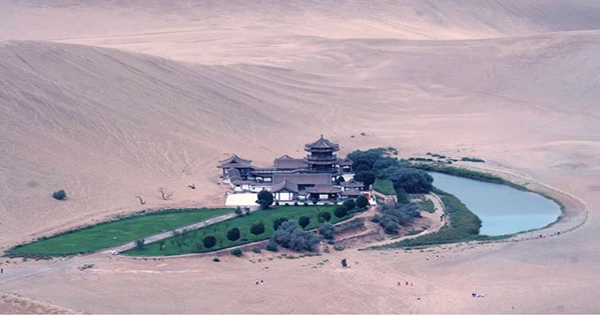A mighty empire constructed a metropolis and settlements in the midst of the Sahara, in what is now southern Libya. These are the earliest known examples of a significant permanent human population living in the absence of a river or lake. Their accomplishment, which is now being explained, is a testament to human creativity – and a warning about our proclivity to misuse the treasures that the Earth provides.
For the past 5,000 years, the Sahara has been one of the most difficult locations on the globe to survive. However, before that, it was a grassland akin to the contemporary Serengeti, with waterholes and lots of game to hunt. Humans thrived in the previous conditions, and it’s regarded to be one of the two locations where pottery was invented.
The Sahara, however, was much like it is now when the Garamantes were creating their society 2,400 years ago – a blistering desert difficult to cross, let alone live in. Those former conditions, however, had left an underground legacy in some places, like the Garamantes’ residence in Wadi el-Agial.

Without contemporary methods, much of this groundwater was buried too deeply to be available in sufficient amounts to sustain agriculture. However, some of it was higher in the landscape at Wadi el-Agial. According to Ohio State University Professor Frank Schwartz, the Garamantes constructed angled tunnels (known as qanats or foggara in Berber) into water-rich hillsides and used the water that poured out to irrigate regions below.
Other ancient civilizations utilized this strategy in dry environments, though not as dry as the one the Garamantes faced. Schwartz believes they acquired the idea from Persia, which pioneered it over a millennium ago.
The Garamantes were mentioned by period writers, although much of the reporting was inaccurate, with some even attributing their exploits to the Romans. Archaeology has addressed many of the misconceptions since the 1960s, but the question of why there was so much groundwater for them to tap remained unanswered.
According to Schwartz, the sandstone aquifer beneath this part of the Sahara is one of the world’s largest when full. Although the Sahara has been a rich grassland multiple times in recent history, it has been millions of years since it has been truly wet. However, Schwartz has demonstrated that the geology of the area ensured that water from a huge catchment area flowed to the base of the Messak Settafet massif during a period when the Sahara still had rainy seasons. For millennia, it supplied water to the Garamantes.
Wadi el-Agial must have appeared to the Garamantians as a paradise. They enslaved slaves to undertake the laborious work of digging for water and were resilient to droughts; floods would have been rare. With huge deserts separating them from any other civilization of comparable size, they were almost certainly unique at the time in facing little fear of attack. Historians believe they had a higher standard of living than the rest of the Sahara region during ancient times.
However, in keeping with humanity’s customary attitude toward finite resources, the Garamantes excavated 750 kilometers (450 miles) of tunnels into the aquifer to gain access to its contents, the longest of which was 4.5 kilometers (2.7 miles). With recharge having nearly ceased once the region became dry, the conclusion was unavoidable.
“The qanats shouldn’t have actually worked,” Schwarts said in a statement. “Because the ones in Persia have annual water recharge from snowmelt, and there was zero recharge here.” The old bounty eventually ran out, and the groundwater dropped below the level of the tunnels. More well-positioned digging may have kept the problem at bay for a while, but the civilization was abandoned some 1,600 years ago.
Schwartz makes no attempt to conceal the repercussions for us. “As you look at modern examples like the San Joaquin Valley, people are using the groundwater up at a faster rate than it’s being replenished,” he said. “California had a fantastic wet winter this year, but it came after 20 years of drought.” If the trend of drier years continues, California will face the same dilemma as the Garamantians. Replacing degraded groundwater supplies can be costly and ultimately impractical.”
Of fact, the scenario is not comparable because we extract the water using pumps rather than gravity, but this simply gives us more time.
















